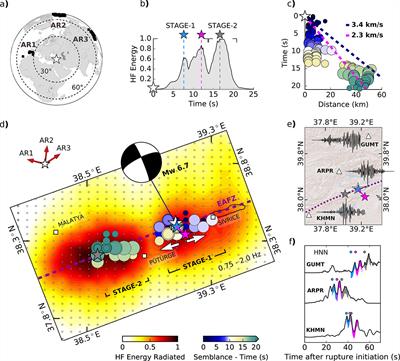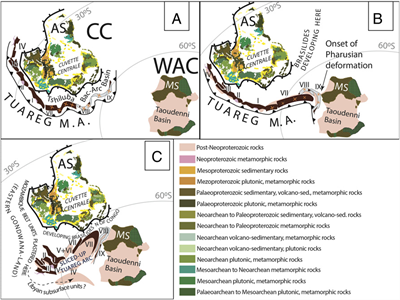Prof.Dr. Tuncay Taymaz and the members of the ITU Active Tectonic, Seismology, Seismotectonics, and Geodynamics Research Group have published their recent findings on the physical properties of the destructive 24 January 2020 Mw 6.7 Doğanyol–Sivrice earthquake at the East Anatolian Fault Zone (EAFZ, Turkey) in the high-impact Tectonophysics journal.
Professor Taymaz and his research team within a close collaboration with world-wide experts in the field of seismology and geodesy have employed multi-data analyses and innovative modelling strategies in the present study to better provide fundamental data and strong constraints for retrieving complex source mechanism of this earthquake and its spatiotemporal slip characteristics along the ruptured segment of fault. Their results are highlighting a case of a damaging earthquake and enhance our understanding of earthquake mechanics, continental deformation and augmented earthquake risk on the EAFZ.

Figure showing a summary of the back-projection analysis on the 24 January 2020 Mw 6.7 Doğanyol-Sivrice Earthquake (Taymaz et al., 2021). Further details of this study can be reached from:
Taymaz, T., Ganas, A., Yolsal-Çevikbilen, S., Vera, F., Eken, T., Erman, C., Keleş, D., Kapetanidis, V., Valkaniotis, S., Karasante, I., Tsironi, V., Gaebler, P., Melgar, D., & Öcalan, T. (2021). Source Mechanism and Rupture Process of the 24 January 2020 Mw 6.7 Doğanyol–Sivrice Earthquake obtained from Seismological Waveform Analysis and Space Geodetic Observations on the East Anatolian Fault Zone (Turkey). Tectonophysics, 804(December 2020), 228745. https://doi.org/10.1016/j.tecto.2021.228745
https://www.sciencedirect.com/science/article/pii/S0040195121000299
A research group including Prof. Dr. A.M. Celal Şengör, Assoc. Prof. Dr. Gürsel Sunal and Cengiz Zabcı from the Geological Engineering Department presented a tectonic model similar to the Altaids for the area that covers northern Africa which is named as the Saharides. Their findings were published in one of the prestigious journals of “Proceedings of the National Academy of Sciences of the United States of America” (Impact Factor: 11.2 (2020)), on 22 December 2020, with the title “Reconstructing orogens without biostratigraphy: The Saharides and continental growth during the final assembly of Gondwana-Land”. Furthermore, an extended version of the study was published online in the "journal of “International Journal of Earth Sciences" in 2021.
Links to both articles are given below;
Celal Şengor, A. M., Lom, N., Zabci, C., Sunal, G., & Oner, T. (2020). Reconstructing orogens without biostratigraphy: The Saharides and continental growth during the final assembly of Gondwana-Land. Proceedings of the National Academy of Sciences of the United States of America, 117(51), 32278–32284. https://doi.org/10.1073/pnas.2015117117
https://www.pnas.org/content/117/51/32278
Şengör, A. M. C., Lom, N., Zabcı, C., Sunal, G., & Öner, T. (2021). The Saharides: Turkic-type orogeny in Afro-Arabia. International Journal of Earth Sciences, 1867. https://doi.org/10.1007/s00531-021-02063-3
https://www.scopus.com/record/display.uri?eid=2-s2.0-85111832546&origin=resultslist

Figure represents three time-lapse frames showing the Precambrian tectonic evolution of the Saharides. See Şengor et al. (2020) for more details.